Key takeaways:
- Neighborhood support groups foster relationships, allowing individuals to share resources and create a sense of belonging.
- Student involvement encourages personal growth and amplifies student voices, shaping campus culture and community.
- Identifying community needs requires genuine conversations and observation, essential for meaningful action.
- Effective communication channels enhance group interactions, allowing for real-time collaboration and feedback.

Understanding neighborhood support groups
Neighborhood support groups serve as vital connections within a community, allowing individuals to share resources, experiences, and encouragement. I remember the first time I attended a meeting—there was an undeniable warmth in the room, as neighbors who were once strangers exchanged stories of struggle and triumph. It hit me then how powerful a simple conversation could be in creating a sense of belonging.
These groups are not merely about assistance; they foster relationships that can transform a neighborhood. Have you ever felt overwhelmed by isolation in a crowded city? I have, and joining a support group opened my eyes to how many others were sharing similar feelings. It was a revelation—realizing that we could lean on each other and build a stronger community together.
Every neighborhood has its unique flavor, and support groups reflect that diversity. They address specific local challenges, whether it’s finding child care resources or tackling environmental concerns, which makes them incredibly relevant. I recall a project where we organized a clean-up day; the simple act of coming together for a common purpose not only beautified our streets but also strengthened our collective spirit. So, how does your neighborhood work together?
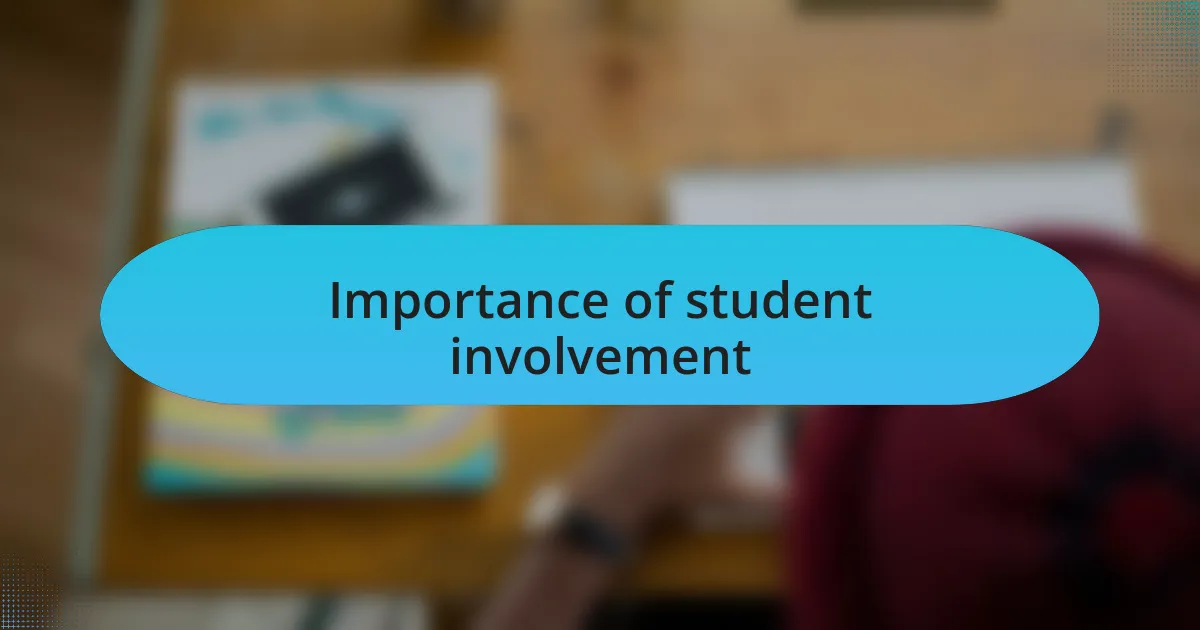
Importance of student involvement
Student involvement is crucial for fostering a vibrant campus culture. When students actively engage with their peers and local communities, they create an environment where everyone feels valued. I recall volunteering for a campus clean-up event—seeing so many students come together, laughing and sharing stories, made me realize how participation could spark lasting friendships and connections.
Moreover, being involved allows students to develop key skills that are essential for personal and professional growth. Whether it’s leading a project or collaborating on group activities, I found that these experiences not only enhanced my leadership abilities but also built my confidence. Have you ever noticed how stepping out of your comfort zone can lead to unexpected opportunities? For me, it opened doors that I never imagined possible.
Involvement also amplifies the voices of students, ensuring that their concerns and ideas are heard. When I joined a committee to address campus issues, it was empowering to witness how our collective efforts could influence change. Isn’t it inspiring to think that by simply being active members of our community, we can shape our experiences and advocate for what we believe in? Each voice matters, and together, we can create a more inclusive and supportive atmosphere.
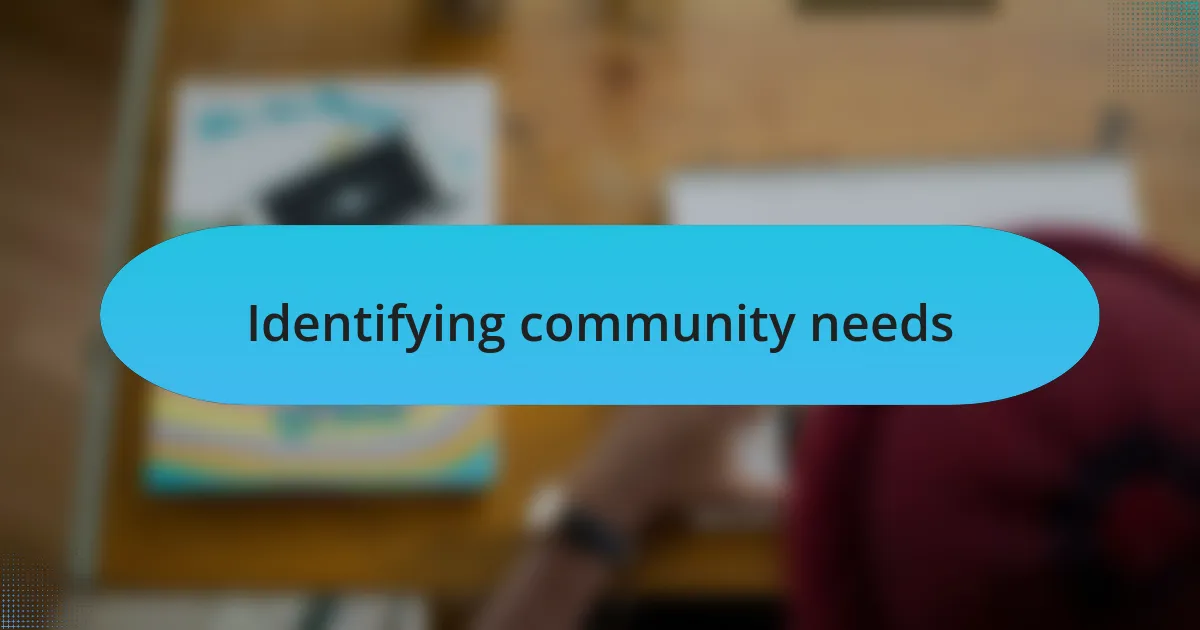
Identifying community needs
Identifying the community’s needs starts with genuine conversations. I remember sitting down with my neighbors over coffee, sharing our experiences and problems. It felt enlightening to hear everyone’s challenges—from a lack of safe spaces to the need for social events that unite us. This dialogue not only opened my eyes to various perspectives but also made it clear that understanding each other’s struggles is essential for identifying what truly matters in our community.
Surveys can be useful tools too, but nothing beats the richness of face-to-face interactions. I once collected feedback through a simple questionnaire, but the insights I gained from impromptu chats were far more impactful. Have you ever realized how much deeper people will go when sharing their thoughts in person? The emotional reactions, the stories behind the responses—they all pointed to a shared desire for a stronger sense of belonging.
In essence, identifying community needs is about observation as much as it is about conversation. I often found myself noticing the little things: the empty park that could be a gathering hub or the interest in various cultural events. These observations sparked conversations, and I learned that sometimes, it takes just one person to recognize a need for change. Wouldn’t you agree that being in tune with our surroundings can lead to meaningful action?
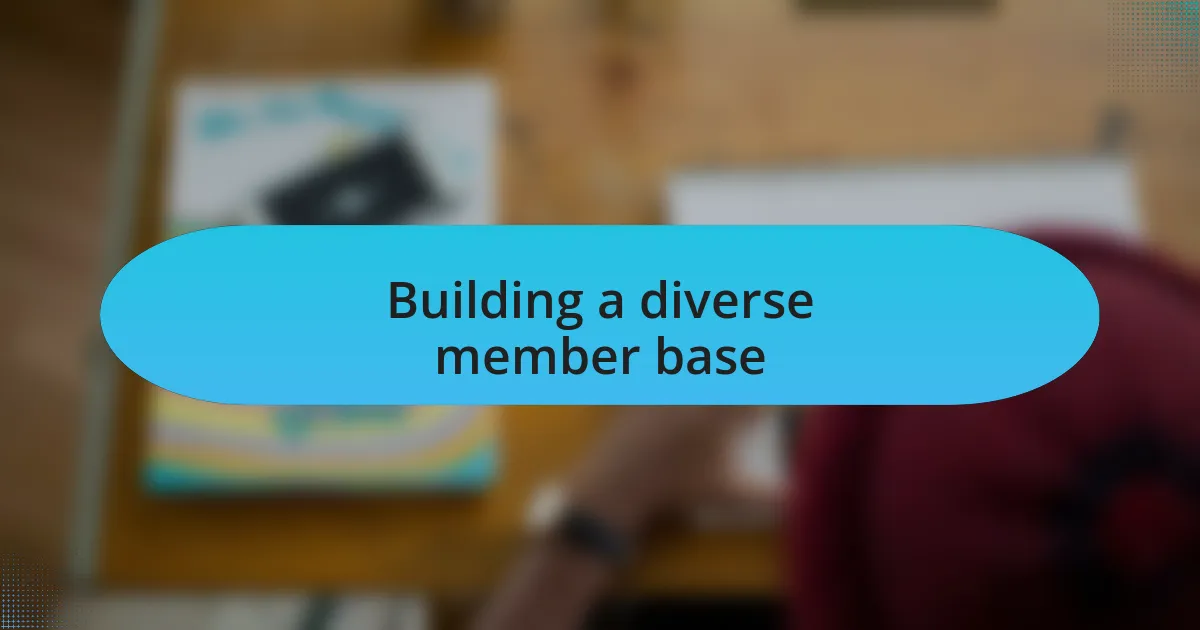
Building a diverse member base
Building a diverse member base requires intentional outreach. I made it a point to engage with people from various backgrounds during our community meetings. One evening, while chatting with a group of international students, I learned about their unique challenges navigating college life here. This interaction reminded me that diversity isn’t just about different cultures; it’s about understanding distinct experiences and perspectives that can enrich our group.
In my efforts, I utilized social media to reach out to a wider audience. I posted about upcoming events and encouraged anyone interested to join us, regardless of their background. I still remember the excitement on a fellow student’s face when they realized that our meetings could serve as a safe space for sharing their cultural heritage. Have you ever felt that thrill of having your voice heard in a room full of diverse opinions? It was those moments that inspired others to participate, fostering a sense of belonging that drew in new members.
I also established partnerships with other student organizations to promote inclusivity. Collaborating with cultural clubs allowed us to celebrate various traditions and make everyone feel valued. There was a time when we organized a joint event that showcased different cuisines from around the world. The laughter and conversations generated that night were deeply fulfilling, proving that when we intentionally build connections, everyone benefits. Isn’t it incredible how a shared meal can break down barriers and create lasting friendships?
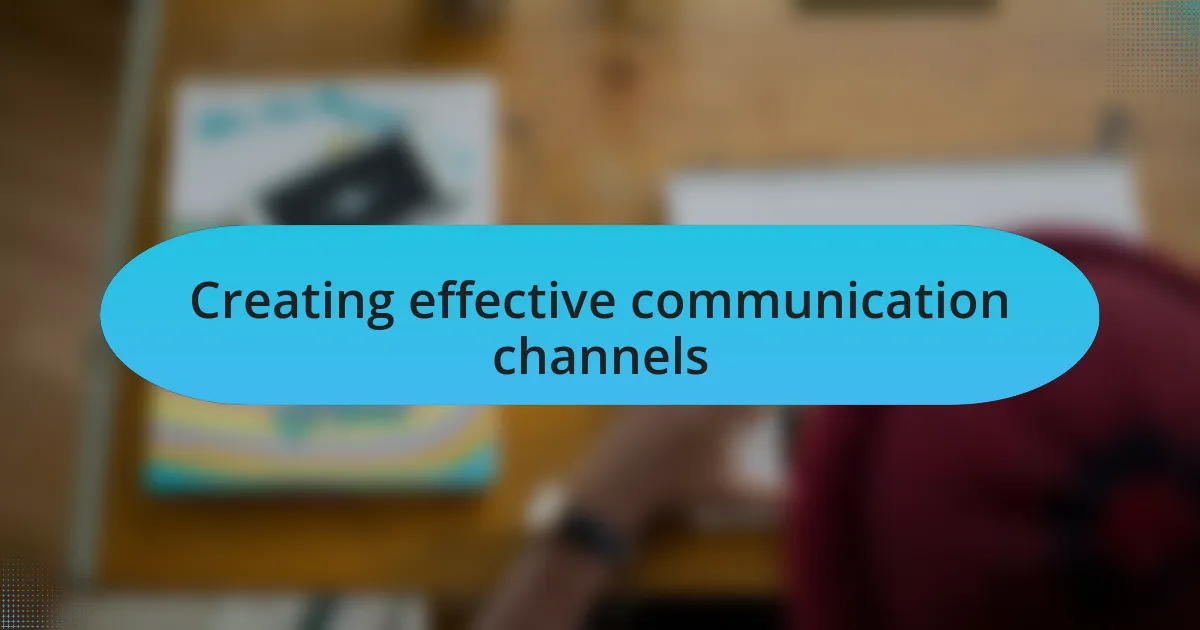
Creating effective communication channels
Creating effective communication channels is paramount for any support group aiming to thrive. I found that establishing a dedicated group chat made a world of difference in our interactions. It was during a late-night brainstorming session, fueled by caffeine and enthusiasm, that we realized quick updates and ideas could flow freely. Have you noticed how often a single text can spark an exciting collaboration? That instant connection helped us respond to member needs in real time.
I also prioritized regular check-ins through informal surveys, asking for feedback on our events and initiatives. Once, after hosting a workshop, I received a response from a shy member who shared how much they appreciated the safe space we provided for discussion. It struck me that not everyone feels comfortable vocalizing their thoughts in a large group. By creating avenues for private feedback, I gave voice to those who may otherwise remain silent. Isn’t it fascinating how a simple question can unlock hidden insights?
Lastly, visual communication played a crucial role. I started designing visually appealing flyers and social media posts that conveyed our mission and upcoming activities. One particular flyer featured a vibrant photo from our last gathering, capturing the joy on everyone’s faces. I still remember the buzz that followed when we posted it online—more students reached out simply because they felt the energy of our group. Who wouldn’t want to be part of something that looks so welcoming and dynamic? Highlighting our community visually made it easier for others to connect with us.
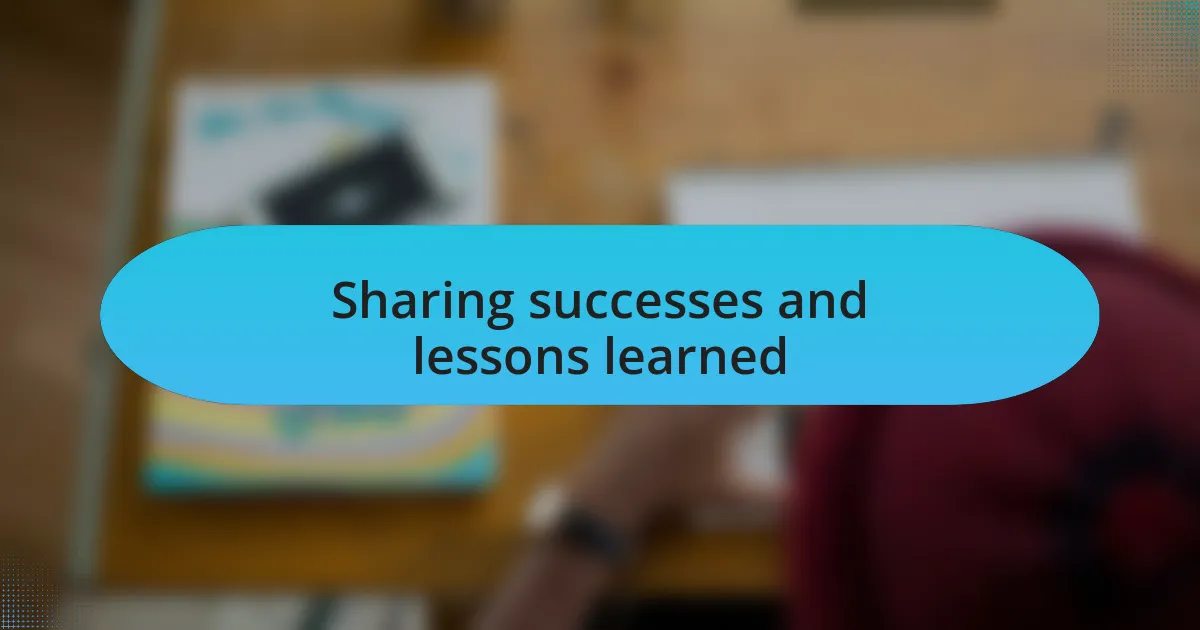
Sharing successes and lessons learned
Sharing our successes and the lessons learned along the way truly enhanced the sense of community within our support group. I vividly recall our very first event, which started as a small gathering and unexpectedly blossomed into a venue filled with laughter and new friendships. It made me realize that celebrating milestones, no matter how small, can motivate members and foster a deeper bond. Have you ever noticed how acknowledging achievements can create a ripple effect, sparking enthusiasm and commitment in others?
One lesson that surfaced repeatedly was the importance of being transparent about challenges. There were times when attendance dipped or ideas didn’t land as expected. Rather than shying away, I chose to discuss these hurdles openly with the group. By sharing our struggles, I saw a transformation; it encouraged others to contribute their ideas and perspectives. Isn’t it incredible how vulnerability can strengthen a community?
Emphasizing personal stories became another key takeaway. During one meeting, a member shared their experience of overcoming anxiety about attending events. Hearing their journey touched us all deeply and highlighted the importance of connection. It made me ponder: could we create an even more supportive environment if we encouraged everyone to share their narratives? I believe the answer is a resounding yes, as those stories often weave the fabric that holds our group together.